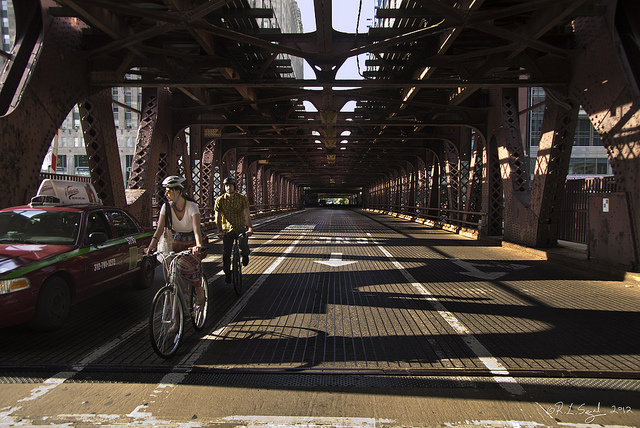Chicago Is Finally Named The Most Bike Friendly City In The U.S.
By Rachel Cromidas in News on Sep 19, 2016 2:40PM
Sorry New York City—you can have the tallest building in the country, but you can't take this from us: Chicago has beat out New York in this year's Bicycling magazine ranking of the most bike-friendly cities in the United States, meeting an ambitious goal the mayor set in 2011.
We've come a long way; Chicago ranked 10th in 2010 and 5th in 2012, and we moved on up to 2nd place in 2014 (Bicycling magazine puts out its biennial rankings every other year). In the meantime, the city has built over 100 miles of new protected bike lanes, pledged to build yet more lanes, experimented with extra-safe curb-protected lanes and installed hundreds of Divvy bike share bicycles around the city.
Bicycling magazine pointed to the promise to build 50-miles of "low-stress" bikeways, the Divvy for Everyone initiative that would expand Divvy's accessibility to Chicago's poorest residents and the dedication of local cycling advocates as reasons Chicago is now the most bike-friendly city. The rankings, out in print Oct. 11, analyze data on biking facilities, bike share users and bike-friendly infrastructure in over 100 U.S. cities.
Mayor Rahm Emanuel accepted the award in a ceremony this morning on The 606.
"Our goal has been to make it easier and safer for everyone - no matter their age or ability - to get around on a bicycle, whether it’s for work, school, exercise or fun," Emanuel said in a statement. "If you live in Chicago, or are visiting and want to take advantage of our great Divvy system, we want everyone to feel comfortable biking in our great city.”
Of course, the state of cycling in Chicago is far from perfect; a rash of fatal cyclist collisions with large commercial vehicles this year, including the first Divvy fatality, has put riders and activists on edge, and inspired a petty backlash against cyclists from the Tribune's editorial board. Activists are still waiting on the city to put forward an action plan for its Vision Zero initiative, with the goal of completely eliminating bike and pedestrian traffic fatalities by 2026.
It's worth noting that, although Chicago has seen several bike fatalities this summer alone, the city has not yet seen more fatalities than in a typical year; meanwhile, bike commuter numbers are at an all time high, which could mean the city is in fact getting safer for cyclists overall, despite the "bike-lash."
A statement on the rankings from the Active Transportation Alliance, the city's most-prominent cycling and pedestrian advocacy group, said credit belongs to both the mayor and the city's extensive grassroots cycling groups for giving Chicago the bike infrastructure it needs.
"These and other developments would not have happened without a highly engaged advocacy community, an enthusiastic department of transportation and a keenly supportive mayor," a statement sent to reporters from Ron Burke, ATA's executive director, said. "Credit also goes to a vibrant local biking culture comprised of bike clubs, online communities and blogs, nonprofit organizations, racing teams and grassroots groups."
“Five years ago, a lot of people thought Active Trans was asking for the moon and stars when we called for a network of barrier-protected bike lanes and launching a bike sharing program,” Burke said in the statement. “But those ideas — like so many others we have promoted — have caught on and have since come to fruition."
I've long said Chicago is a more bike-friendly city than New York City (which took first place in 2014 and is down to 4th now), despite New York's similarly strong commitment to bike infrastructure and safety and its own thriving advocacy community. After commuting primarily by bike for years in New York and Chicago, I found that it wasn't always about the infrastructure—Manhattan's severe traffic congestion at all hours, coupled with the endless stream of taxis darting out from pretty much everywhere, made biking around the city center a harrowing experience, even with the protected bike lanes. And as for the outer boroughs: I found that Brooklyn, Queens and Bronx drivers could be just as intolerant of cyclists as Chicago's drivers, perhaps because bike commuters are such a small minority and many drivers still don't realize cyclists belong on the roads, too.
